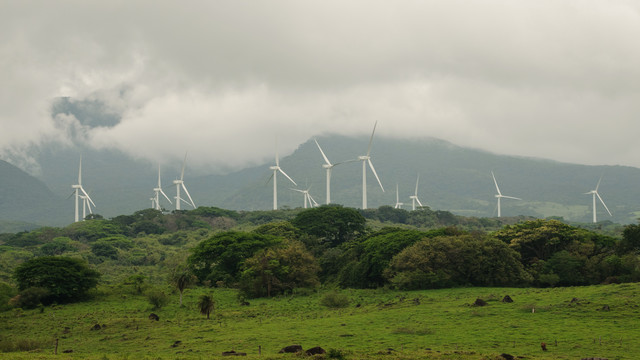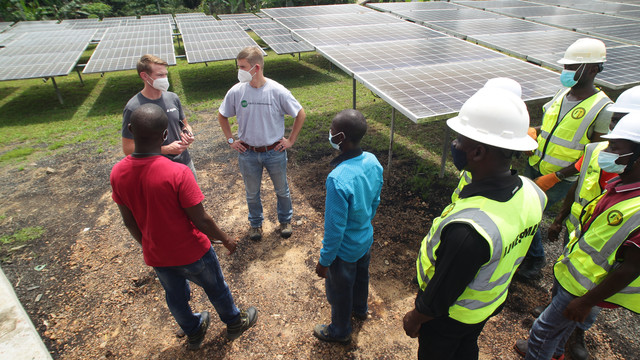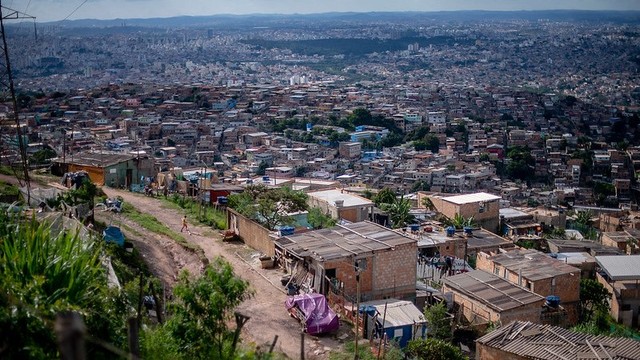'Sustainable development science' for transforming our world
IIED's Steve Bass proposes a 10-year review of the Millennium Ecosystem Assessment as a guide for taking forward the Sustainable Development Goals.


Testing the water in Kenya's Tana River watershed. The river's ecosystem is being affected by a range of factors. Public and private organisations are exploring ways to improve ecosystem management (Photo: Georgina Smith/CIAT, Creative Commons via Flickr)
Sometimes it helps to look back before moving forward. Governments, businesses and communities want to know how they can truly 'transform our world' through implementing the Sustainable Development Goals (SDGs). I have been looking back at the Millennium Ecosystem Assessment, published 10 years ago, as an early guide to what to do.
There is no doubt that, 40 years after the notion was first introduced, last month's agreement on a universal framework for sustainable development is awe-inspiring. But the challenge of implementing 17 goals and 169 targets across diverse societies is not to be underestimated.
How will people make better decisions than in the past? I believe the Millennium Ecosystem Assessment (MA), and the innovations it subsequently inspired, can provide useful insights for developing both a policy-friendly evidence base and a common 'language' for sustainable development.
Definitions of sustainable development invariably focus on how things could or should be, but are much weaker at framing how things actually are and how change occurs in reality. In addition there is little evidence of recognised sustainable development achievements – ask anyone who leads an organisation or initiative for effective examples and they are hard pushed!
That's where science comes in – good, interdisciplinary science helping to transform understanding from what things should become, to how they can actually get there, and to transform institutions from the siloed to the synergistic.
The MA demonstrated the links between ecosystems, the services they provide, and human wellbeing. It offered the first assessment of how these links were playing out globally.
'Not too well' was the verdict. It estimated that 65 per cent of ecosystems were being degraded – this disintegration of the natural foundations of human life is at least as significant as climate change.
From understanding to action
The MA had a rather modest launch and did not directly address policy. It was better at demonstrating the complex nature of the problem than inspiring step-by-step action. Its emphasis on 'ecosystem services' had far less political and public interest than climate change. In spite of this, in the last 10 years it has been picked up and adapted in useful and often surprising ways.
Scientists involved in Ecosystem Services for Poverty Alleviation (ESPA), an interdisciplinary research programme supported jointly by DFID, NERC and ESRC, have drawn on MA understanding, exploring ecosystem service-human wellbeing links in 50 countries.
As chair of ESPA's board, I took time out to explore what ESPA scientists are beginning to publish. They show how the MA's analytical framework has been adopted and adapted not only by scientists, but also by economists, planners, statisticians and accountants who are trying to get on with the challenge of 'transforming the world'.
Some have improved its function to explore the sources and sinks of ecosystem service flows, as well as who benefits and who bears the costs. Scientists have also found ways to:
- Identify the dis-benefits of ecosystems, such as pests and diseases
- Incorporate the wellbeing aspects of the non-ecosystem environment such as urban shelter
- Incorporate rights issues, such as environmental entitlements and empowerment, and
- Improve its economic application, through ecosystem service valuation and accounting.
All of these innovations have real-world potential for transforming the machinery of government, business and society. Now, with the SDGs for 2030, there is a potential demand, too.
Bringing environmental and development objectives together
I have been working for more than 30 years on what is dubbed, rather uninspiringly, 'environmental mainstreaming'. The 'push' by environmentalists has begun to be accompanied by a 'pull' from finance ministers and chief executives who want to know about environmental assets and risks.
Accounting for natural capital, reviewing public environmental expenditure, and carrying out strategic environmental assessments, have all brought environment and development objectives together. Almost all countries have now shifted from siloed environment-development working to mutual environment and development safeguards. Many countries have gone further, dabbling with easy win-win synergies between environment and development.
But the SDGs demand a more systematic approach – knowledge and institutional change that can achieve even more than is possible under current rules and governance.
Looking back to help us move forward
Because the MA has been taken up by so many different professions and scientists, I have been discussing with colleagues the value of a forward-looking 'MA+10' review to inform the task of "building the integrated and transformative institutions needed to implement the SDGs (PDF)".
The most obvious outcome of an 'MA+10' review would be an interdisciplinary framework. One that would put the international biodiversity and environment conventions front and centre in planning sustainable development. One that would help scientists to work better together in shaping 'sustainable development science' research questions. And one that can be adopted by public and private sector alike to enable better communication, integrated decision-making, and policy coherence.
But one that, while being useful enough to support action, would not oversimplify the language and discourse that people need to express the complex world of people-nature relations.
I believe an inspiring 'universal' framework of joint human and ecosystem wellbeing can rewire science and institutions for the 21st century, helping to achieve the SDGs in the real world (and not just in bureaucrats' dreams). The way to devise it is by joining diverse communities of practice together, building on the approach pioneered by the MA.
Steve Bass (steve.bass@iied.org) is a senior associate at IIED and independent chair of the ESPA programme executive board. This blog was originally posted by ESPA.



